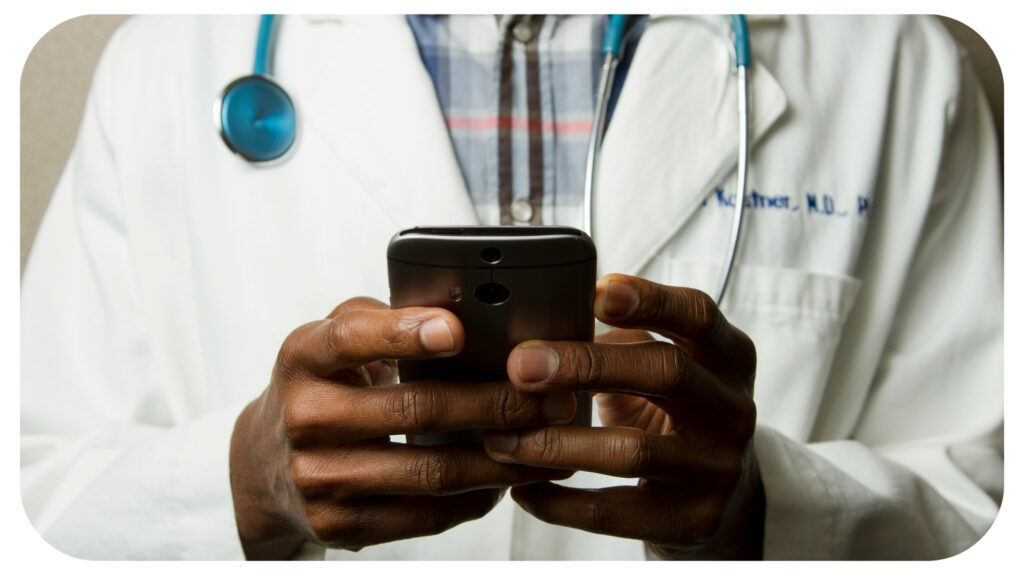Exploring the Vital Nexus of Telehealth and Longevity Care: Roger Farahmand Examines Checks and Balances in the Age of Remote Healthcare

In the landscape of modern healthcare, the emergence of telehealth has revolutionized patient-doctor interactions and become a vital tool in addressing the evolving needs of longevity care. With an aging population and the ever-growing demand for healthcare services, telehealth stands at the forefront, offering innovative solutions to bridge the gap between patients and providers.
Roger Farahmand, an entrepreneur known for revitalizing hospitals and advocating for better remote solutions for mental health care, dissects the roles of telehealth in promoting healthy aging, managing chronic conditions, and ensuring access to care for older adults. Through his professional lens, Roger Farahmand explores the checks and balances required in remote healthcare delivery, discussing the benefits, challenges, and ethical considerations that come with this modern approach.
Contents
ToggleUnderstanding Telehealth and Longevity Care
Telehealth, a term used as a blanket term for remote healthcare services, has become a cornerstone of modern medical practice. Defined as the use of digital information and communication technologies to deliver healthcare remotely, telehealth offers an array of services including virtual consultations, remote monitoring, and telemedicine.
“Telehealth’s integration into longevity care, which focuses on promoting wellness and managing health issues related to aging, marks a significant paradigm shift in healthcare delivery,” says Roger Farahmand. “The evolution of telehealth can be traced back to the early experiments with telemedicine in the 1960s.” It was the advancement of internet technologies in the late 20th and early 21st centuries that truly propelled telehealth into the mainstream. Today, its applications in longevity care are vast and impactful. From enabling older adults to access medical advice from the comfort of their homes to facilitating remote monitoring of chronic conditions, telehealth has become an indispensable tool for promoting healthy aging.
Despite its numerous benefits, telehealth also presents challenges. These include technological barriers for older adults, concerns about data security and privacy, and the need for regulatory frameworks to ensure quality care delivery.

Technological Advancements Driving Remote Healthcare
The landscape of telehealth and longevity care is continually shaped by technological advancements, ushering in a new era of remote healthcare delivery.
Notes Farahmand, “Innovations such as AI-driven diagnostics, remote monitoring devices, and virtual reality applications have transformed the way healthcare is accessed and delivered, particularly for older adults.”
AI-driven diagnostics have proven to be a game-changer in telehealth, offering swift and accurate assessments of health conditions. Machine learning algorithms can analyze vast amounts of patient data to provide insights and assist healthcare providers in making informed decisions. Remote monitoring devices, ranging from wearable sensors to smart home technologies, allow for continuous tracking of vital signs and health metrics.
Virtual reality (VR) applications, though still in the early stages, hold promise in enhancing the quality of life for older adults. VR simulations can be used for cognitive training, physical therapy, and even alleviating social isolation. These advancements collectively contribute to improved patient outcomes, increased healthcare efficiency, and reduced burdens on traditional healthcare systems.
Ensuring Quality and Safety in Remote Healthcare
In the dynamic landscape of telehealth and longevity care, ensuring quality and safety is key. Regulatory frameworks and guidelines play a crucial role in governing the practice of telehealth, aiming to maintain standards of care and protect patient interests.
Regulations vary across regions, but they typically encompass licensure requirements for healthcare providers, guidelines for telemedicine consultations, and rules for prescribing medications remotely. These frameworks are designed to uphold the same standards of care as in traditional healthcare settings, ensuring that patients receive appropriate and effective treatments.
Data security and patient privacy are also focal points in remote healthcare settings. With the transmission of sensitive health information over digital platforms, safeguarding this data is of utmost importance. Encryption technologies, secure servers, and adherence to strict privacy protocols are essential to protect patient confidentiality.
To mitigate risks and enhance quality care delivery in telehealth, healthcare organizations employ various strategies. These include robust telehealth training for providers to ensure proficiency in virtual care, implementing telehealth-specific protocols and guidelines, and conducting regular audits to monitor compliance with standards.
As telehealth continues to evolve and integrate into longevity care, a proactive approach to quality and safety is vital. By staying abreast of regulatory updates, prioritizing data security, and implementing best practices, healthcare providers can navigate the complexities of remote healthcare while upholding the highest standards of patient care.
Bridging Gaps and Overcoming Challenges
Despite the transformative potential of telehealth in longevity care, disparities in access persist, especially in underserved communities. Factors such as limited digital literacy, inadequate internet connectivity, and cultural considerations pose significant challenges to equitable telehealth access.
Digital literacy, or the ability to use digital devices and navigate online platforms, remains a barrier for many older adults. Addressing this challenge requires targeted education and training programs to empower individuals with the skills needed to benefit from telehealth services.
“Connectivity issues, particularly in rural or remote areas, can hinder access to reliable telehealth services. Initiatives to expand broadband infrastructure and improve internet access are essential steps in bridging this gap,” says Farahmand.
Mobile health units and community partnerships can bring telehealth services directly to those in need. Cultural considerations, such as language barriers and varying healthcare beliefs, also impact telehealth utilization. Culturally competent care and language interpretation services are vital in ensuring that telehealth is accessible and effective for diverse populations.
Successful initiatives and collaborations have emerged to tackle these challenges. From telehealth training programs for seniors to partnerships between healthcare providers and community organizations, these efforts aim to improve access to telehealth for all demographics.
By addressing disparities head-on and fostering inclusivity, healthcare providers can harness the full potential of telehealth to promote healthy aging and enhance longevity care for everyone. The potential of telehealth to revolutionize how we approach aging and chronic disease management is exceptional.
From AI-driven diagnostics to remote monitoring devices and VR applications, the tools at our disposal continue to expand. It is essential to celebrate the successes but also recognize the work that remains. By leveraging technology and working together, healthcare providers can pave the way for a future where remote healthcare is not just a convenience but a cornerstone of longevity care, improving the well-being of individuals as they age.
Most Inside
Most Inside offers high-quality recommendations and valuable updates to enhance all aspects of your life, providing premium guidance and enriching experiences.




